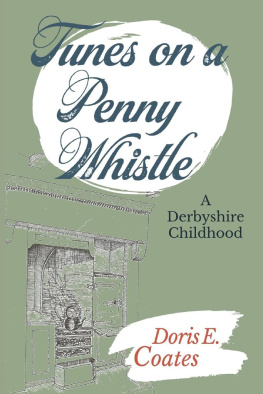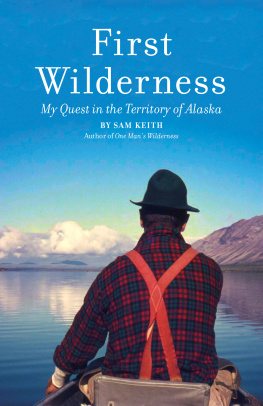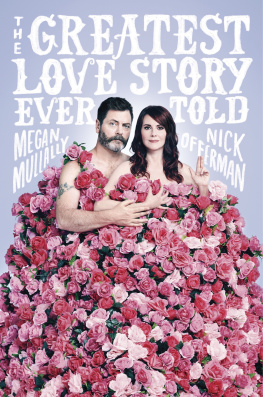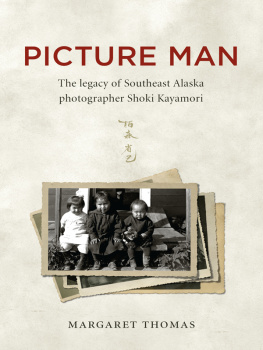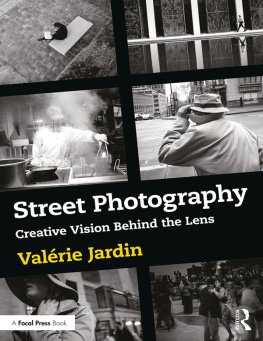Table of Contents
List of Pages
Landmarks


The photos alone make this book a must-have for those interested in uncovering the queer histories of rural New Brunswick. The affectionate photos of Len and Cub together convey the essence of a relationship never recognized during their lifetimes. An important contribution to Canadian queer historiography.
Ed Jackson, New Brunswick-born queer journalist and co-editor of Any Other Way: How Toronto Got Queer
A brilliant piece of historical detective work. Meredith J. Batt and Dusty Green have pieced together a rare portrait of two queer, rural New Brunswickers from the 1910s and 1920s. Historically significant, this exhaustively researched, beautifully written work is utterly absorbing given the rich photographic record included in the volume. But photos alone dont make history, it is the sensitive, analytically nuanced writing of Batt and Green which brings their world to life. This is a book for every rural queer kid who wondered if they were the only one and for queer historians eager for histories of same-sex experiences and culture beyond the cities.
Valerie J. Korinek, Professor of History, University of Saskatchewan and author of Prairie Fairies: A History of Queer Communities and People in Western Canada, 1930-1985
An archive to treasure. This story of love and companionship pulls us across time and reminds us of the queer possibilities that have long blossomed in New Brunswick and beyond.
Craig Jennex, Professor of English, Ryerson University and co-author of Out North: An Archive of Queer Activism and Kinship in Canada
Len & Cub A QUEER HISTORY
MEREDITH J. BATT and DUSTY GREEN
Goose Lane Editions
Copyright 2022 by Meredith J. Batt and Dusty Green.
All rights reserved. No part of this work may be reproduced or used in any form or by any means, electronic or mechanical, including photocopying, recording, or any retrieval system, without the prior written permission of the publisher or a licence from the Canadian Copyright Licensing Agency (Access Copyright). To contact Access Copyright, visit accesscopyright.ca or call 1-800-893-5777.
Edited by Simon Thibault.
All images courtesy of the Provincial Archives of New Brunswick unless otherwise indicated.
Cover and page design by Julie Scriver.
Front cover: Len and Cub at the Keith family cabin at Cranberry Lake, New Brunswick (P27-MS1O1-140).
Back cover: Len and Cub on an excursion to Jemseg, c. 1916. Image colourized by Jules Keenan. (P27-MS1O1-172)
Printed in Canada by Friesens.
10 9 8 7 6 5 4 3 2 1
Library and Archives Canada Cataloguing in Publication
Title: Len & Cub : a queer history / Meredith J. Batt and Dusty Green.
Other titles: Len and Cub
Names: Batt, Meredith J., author. | Green, Dusty, author.
Description: Includes bibliographical references.
Identifiers: Canadiana (print) 20210363894 | Canadiana (ebook) 20210363967 | ISBN 9781773102641 (softcover) | ISBN 9781773102658 (EPUB)
Subjects: LCSH: Keith, Leonard. | LCSH: Coates, Joseph (Of Havelock) | LCSH: Gay couplesNew BrunswickBiography. | LCSH: Gay menNew BrunswickBiography. | LCSH: Gay menNew Brunswick Pictorial works. | LCGFT: Biographies.
Classification: LCC HQ75.7 .B39 2022 | DDC 306.76/6209227151dc23
Goose Lane Editions acknowledges the generous support of the Government of Canada, the Canada Council for the Arts, and the Government of New Brunswick.
Goose Lane Editions
500 Beaverbrook Court, Suite 330
Fredericton, New Brunswick
CANADA E3B 5X4
gooselane.com
For the queer youth of New Brunswick, may you take heart from this story and find your place in this province.
And in memory of our wonderful friend and mentor, who encouraged us to tell this tale, R.M. Vaughan (1965-2020).
And to Leonard Olive Keith and Joseph Austin Coates, without whom this book would not be possible.
Contents
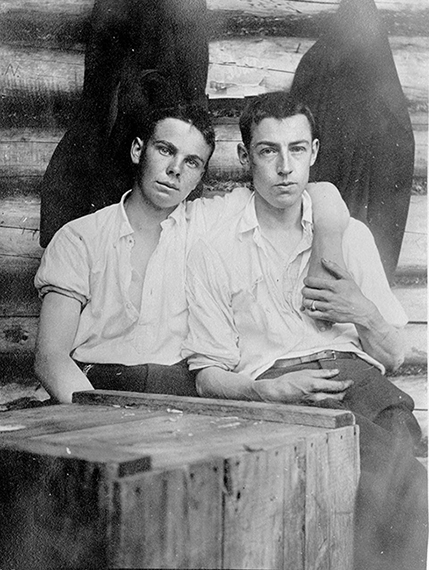
Len Keith and Cub Coates (P27-MS1O1-140)
Preface DUSTY GREEN
While working on this book, Meredith and I were often asked what it meant to us to bring Len and Cubs story to light. Weve regularly remarked that we see ourselves in Len and Cub, that we relate to them in many ways, even going so far as to refer to them as our boys. What I didnt anticipate was how our boys would empower me, let alone the empowerment that came with representation. I dont think either one of us realized how important this story would be for us, and what it could mean for other queer people in the province and indeed all New Brunswickers. With the photos of Len and Cub, this identifiably queer couple from rural New Brunswick from nearly a century ago, I not only got to see them but myself as well.
Growing up in rural New Brunswick during the 1990s and early aughts, queer representation was extremely limited, especially where I needed it most: in my school life and in the curriculum. I was never taught about queer people or sexuality. There was no mention of queer liberation in history or social studies, and the less said about my exclusively heterosexual abstinence-centric sex-ed, the better. To say that growing up queer in rural New Brunswick was difficult for me is to put it mildly.
Over time I became aware of the often-touted phrase in queer circles, We have always been here. I knew that we, queer people, had always existed, but the here never clicked for me. Growing up, the word gay was exclusively used as a slur, and by the time I came out at sixteen, I had developed an internalized homophobia that was so firmly set that I considered it to be baked-in. Being gay was the last thing I wanted to be after hearing and absorbing all of the horrible things that my adolescence had supposedly taught me about what it meant to be gay. Its fuel source came in the form of derision from my peers, my church, and the community at large, culminating in an act of homophobic violence that marked the end of my time living in rural New Brunswick. Belonging to a marginalized population in a place seemingly devoid of representation, where physical violence was no longer a threat but a reality, compounded my sense of being ostracized.
I still carry the weight of that trauma, but things feel lighter now. Part of bringing that lightness to fruition involved embracing queer culture, identity, and history as a form of healing. Despite being separated by some hundred years or so, throughout the course of writing this book I found myself relating more and more to Len and Cubs experiences as outsiders, queer people surviving a volatile environment in their own hometown. Their lives resonated with me as I recognized their ability to hide in plain sight. I caught myself imagining the boys finding safe spaces to express themselves, and perhaps developing their own system of coded language in order to keep their relationship (and themselves) safe.
Despite working in the culture and heritage sector during and after university, queer history seemed to elude me. It was missing from my education and suspiciously absent in institutions. With no apparent evidence to the contrary, I assumed that queer records from the past were either extremely rare or simply did not exist. What little queer history I knew about came strictly from urban areas far away from my hometown: the Stonewall Riots of 1969 in New York City or Operation Soap, when the bathhouses were raided by police in Toronto in 1981. Our history was one of fighting the violence against us, rising up against it. Where were the stories of queer resistance, activism, and liberation from my province? Queer history in New Brunswick? Impossible, I thought. Not in my vision of this place.




